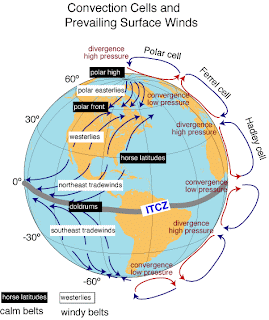Visiting Costa Rica during the holiday season is a unique experience that will set the scene for long lasting memories. The festive mood, sunshine and warm temperatures will bring the Christmas Spirit to your Heart. When we think about Christmas, more often than not, the first thing that comes to mind is “A White Christmas” with the romantic scenery of the snowflakes on the Christmas trees and the Christmas carols and hot apple cider. Maybe a “Tropical Christmas” is another great way to experience the holidays.
In Costa Rica, Christmas is Tropical and Green, surrounded by Nature, sunny days, exotic birds like my favorite friends the red macaws flying over the back yard, or the Toucans calling to each other every morning. Imagine going for a walk on the beach, or maybe swimming or surfing, and enjoying the beautiful sunsets every evening while having dinner. It certainly is a different kind of Christmas, but, it is a wonderful experience, and for many a cherished memory.
Since Costa Rica is primarily a catholic nation, the celebration of the season is all about lights, music, and family togetherness. The Christmas trees in Costa Rica are often fragrant cypress trees decorated with ornaments and lights. Sometimes Ticos show their creativity by decorating dried branches of coffee plants, they also like to decorate their houses with lights and poinsettias.
Like many other catholic nations, nativity scenes with figurines of Mary, Joseph, and the three wise men are a traditional Christmas decoration. The focus of this tradition is the coming of the baby Jesus, whose figurine is placed in the nativity scene the night before Christmas, the children of the household sing carols while placing the figurine in the manger, they remind baby Jesus to bring the presents they have been wishing for, after all, they have been good kids. I would say that it is the equivalent of leaving milk and cookies for Santa. Of course, for the devoted adults the meaning of this celebration goes a little further, it is the rebirth of the Christ-love in their hearts.
The Christmas tradition in Costa Rica started around 1601, when the governor at that time declared it a national holiday. Costa Ricans, celebrate with Posadas involving the reenactment of Mary and Joseph “looking for room at the Inn”, the 9 days before Christmas. The Costa Rican Christmas season does not end until January 6, when the three wise men have greeted baby Jesus and presented him with the gifts of Gold, Myrrh, and Frankincense.
Ticos love these festivities, therefore, they start the Christmas season on the weekend closest to December 13 with the Festival of Lights, when the city of San José show their best Christmas decorations becoming a true garland of lights. This is a tradition that started only in 1996 when the municipality of San José organized the first parade with decorated carriages, concerts, and fireworks. There are other traditional festivities involving bullfights, religious processions, costumed dancing through the streets, and stands of traditional food wherever the festivity takes place.
 Christmas Eve is the main celebration in the country, as opposed to Christmas day in many other cultures. Traditional families observe midnight mass called “Misa de Gallo” (which literally means, Mass of the Rooster). Some other less traditional families take the whole week or part of it to go to the beach. Most families gather for Christmas Eve dinner, before, after or instead midnight mass. This important dinner is just as elaborate as any other one we might know, of course with the Costa Rican spin of flavors and presentation
Christmas Eve is the main celebration in the country, as opposed to Christmas day in many other cultures. Traditional families observe midnight mass called “Misa de Gallo” (which literally means, Mass of the Rooster). Some other less traditional families take the whole week or part of it to go to the beach. Most families gather for Christmas Eve dinner, before, after or instead midnight mass. This important dinner is just as elaborate as any other one we might know, of course with the Costa Rican spin of flavors and presentationSome of the dishes included on the traditional menu are:
Tamales: Large dumplings made with corn flour, seasoned with small pieces of pork, olives, cooked rice, and other various stuffing’s. They are often steamed and served wrapped in banana leaves.
Picadillo: A uniquely Costa Rican way to prepare vegetables like water squash, green papaya, potatoes, carrots or other veggies; they are chopped into small cubes and combined with onions, garlic and a small bit of ground beef for seasoning.

Empanadas: a version of a deep fried turn over filled with seasoned chicken, pork, meat, or cheese.
Chicharrones: Deep-fried Pork Belly.
"Tres Leches Cake": This is the most traditional of desserts in Costa Rica and it owes the name to the mix of the three milks used to soak the cake. (Leche means milk in Spanish.) The three milks in the soaking sauce are sweetened condensed milk, evaporated milk, and heavy cream, whipped cream is often the preferred topping. Many Tico Families have included the traditional turkey in their Christmas menu.
Costa Rica has become the country of choice for many with many different ethnic groups that enjoy the Costa Rican culture and cuisine and at the same time, they enjoy preserving their individual cultural flavor, traditions and “Holiday Recipes”. Therefore, if you come to Costa Rica for the Holidays, you will have a wide variety of choices for your Christmas Dinner.
The Holidays in Costa Rica are very traditional in their own right and filled with warm weather, warm feelings, great outdoor activities, and unforgettable experiences.
Happy Holidays to you and everybody who lifts your Christmas Spirit.






































